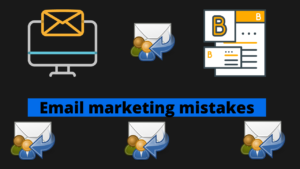Today We Will Discuss About Email marketing or What Is Email Marketing? Email Marketing can be a great way to build your brand, nurture relationships with customers, and help grow your business. It all starts with solidifying your goal for using email marketing in your business: Do you want to drive sales or increase awareness? If you’re focusing on driving sales, there are many different strategies you can use based on which channel you choose.
Once you decide what kind of strategy will work best for your business, it’s time to create an email template. When creating a template for mass emails, there are some considerations that need to be made about each portion of content included.
What Is Email Marketing? Type of Email Marketing
Email marketing can be direct or indirect. Direct email marketing includes receiving an email from a company you have purchased from, while indirect is getting emails from companies you have never heard of. A professional in direct email marketing would know how to work with both types of campaigns and design effective emails that people want to read and open.
Read More:- How To Write Professional Email For Client.
When it comes to budgeting for your campaign, think about how much money you are willing to spend on advertising before taking a position in direct email marketing. If you are looking for an exciting career in direct or indirect email marketing, consider starting off as an intern at a professional or small business office.
How To Do Email Marketing?
Email marketing is a great way for businesses, big or small, to connect with their customers. At Wix we recommend you try our easy-to-use email marketing platform for free – it’s packed with features like responsive templates, personalized links, and advanced analytics that will help grow your business.
We sat down with Brett Schaffer – an experienced e-mail marketer – to learn more about his favorite mistakes in email marketing, how they can be avoided, and how they could impact your bottom line. Here’s what he had to say: 1) Not doing any segmentation You should always ask yourself who you’re sending your emails to. Is it an existing customer? Is someone new? Someone who has made a purchase but not yet made another one?
Email Marketing Templates
When it comes to email marketing, be sure you’re using a template that’s designed for marketers. Many email service providers offer templates—or even premade emails—that are built with marketers in mind. This means you’ll have access to information such as best practices on a copy, where links should go, design tips, and more. (Check out our favorite free e-mail templates here.)
Email Marketing Mistakes and How to Avoid Them
First, let’s go over the top five mistakes you can make when it comes to your email marketing strategy and how to avoid them.
Email marketing mistakes you might make
What do you think is the most common mistake made by marketers? I would imagine that it’s one of three things: sending too many, not segmenting properly, or not keeping a clean database. Let’s take a look at each in turn. In general, I believe there are two main mistakes people make when email marketing: They send too many, or they don’t send enough.

Obviously too many encompass much more than just spamming people over and over again; oftentimes simply being an annoyance is what gets marketers in trouble here. Sending email after email until someone tells you to stop is not how to attract new customers — especially not loyal ones.
1) Put personal information in your signature file.
Don’t include your email address or phone number in your signature file. These details should be hidden from public view. You don’t want people who have no business contacting you personally to be able to do so by clicking a button on your website. Instead, consider adding a separate page for contact information only for those who might need it.
2) Spamming your contacts.
It’s easy to hit that send button after you’ve spent hours writing an email, but don’t just blast your contacts with Dear friends, thanks for being my friend! Love, My Life. Put some thought into what you send people. Ask yourself: Does it apply directly to them? Is it something they may find valuable or interesting? Is it part of a regular contact schedule (e.g., monthly newsletter)?
3) Not having a call-to-action in your emails.
Remember, it’s not enough to just send an email; you need a purpose behind that email. If your goal is for people to click on something in your emails, be sure there’s a clear call to action for them to do so. As a rule of thumb, include a single call-to-action in each email that relates directly back to your sales funnel (you can add additional CTAs if they make sense). When it comes time for prospects or leads to make a decision, have them rely on your emails as their guide through their buying journey.
4) Not segmenting your list.
Do you send out emails to your entire list? If so, it’s time to stop. There’s a good chance you’re not reaching your best customers, and that means you’re not converting as many leads into customers as you could be. Instead of sending emails about your new product line or sales specials, target specific segments of your email list with tailored messages designed for each group.
Also make sure you pay attention to when people open their emails — if they do so during work hours, put more emphasis on marketing strategies geared toward making sales in-person. If most of them read their email after work hours and on weekends, then focus on strategies geared toward building brand awareness by providing content that helps build trust with potential buyers.
